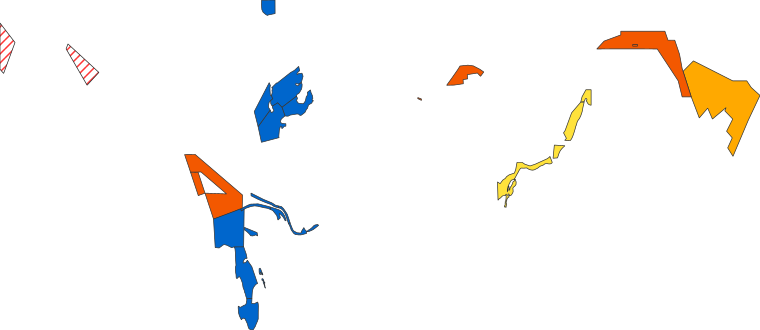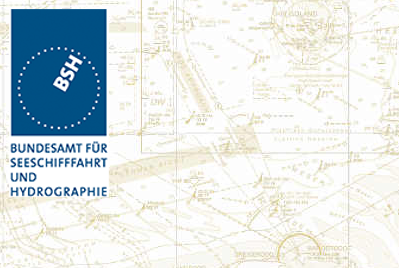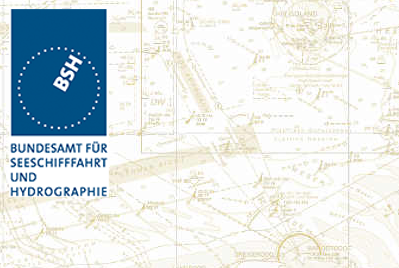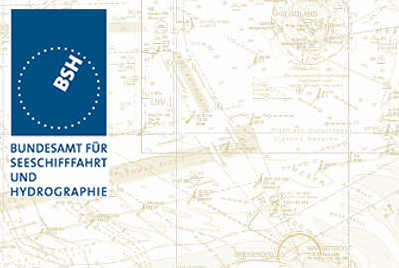Keyword
Baltic Sea
2184 record(s)
Provided by
Type of resources
Available actions
Topics
Keywords
Contact for the resource
Update frequencies
Service types
-
The field experiments ALKOR 2000 (consisting of three cruises: ALKOR 4/2000, 6/2000, 10/2000) and ALKOR 2001 (4/2001, 6/2001, 10/2001) took place in the central Baltic Sea. The six cruises of the German Research Vessel Alkor with duration of about seven days each led to a point of the Baltic Sea which is most remote from the adjacent lands and additionally a grid point of regional climate model REMO. The ALKOR experiments as well as BASIS 1998 and BASIS 2001 are part of the research compound BALTIMOS (BALTic sea Integrated MOdel System). BALTIMOS in turn is part of the Baltic Sea Experiment (BALTEX). The overall objective of all eight field experiments (ALKOR and BASIS) was to collect a comprehensive data set suited to validate the coupled model system BALTIMOS for the Baltic Sea region. The observations mainly focus on: - the atmospheric boundary layer structure and processes and the air-sea-ice interaction over areas with inhomogeneous sea ice cover - the atmospheric boundary layer structure over open water under different synoptic conditions such as cold-air advection, warm-air advection or frontal passages. In addition to the published datasets several other measurements were performed during the experiment. Corresonding datasets will be published in the near future and are available on request. Details about all used platforms and sensors and all performed measurements are listed in the fieldreport. The following datasets are available on request: ground data at RV Alkor
-
The field experiments ALKOR 2000 (consisting of three cruises: ALKOR 4/2000, 6/2000, 10/2000) and ALKOR 2001 (4/2001, 6/2001, 10/2001) took place in the central Baltic Sea. The six cruises of the German Research Vessel Alkor with duration of about seven days each led to a point of the Baltic Sea which is most remote from the adjacent lands and additionally a grid point of regional climate model REMO. The ALKOR experiments as well as BASIS 1998 and BASIS 2001 are part of the research compound BALTIMOS (BALTic sea Integrated MOdel System). BALTIMOS in turn is part of the Baltic Sea Experiment (BALTEX). The overall objective of all eight field experiments (ALKOR and BASIS) was to collect a comprehensive data set suited to validate the coupled model system BALTIMOS for the Baltic Sea region. The observations mainly focus on: - the atmospheric boundary layer structure and processes and the air-sea-ice interaction over areas with inhomogeneous sea ice cover - the atmospheric boundary layer structure over open water under different synoptic conditions such as cold-air advection, warm-air advection or frontal passages. In addition to the published datasets several other measurements were performed during the experiment. Corresonding datasets will be published in the near future and are available on request. Details about all used platforms and sensors and all performed measurements are listed in the fieldreport. The following datasets are available on request: ground data at RV Alkor
-
The field experiment BASIS 1998 took place in the Gulf of Bothnia in the Baltic Sea in a boundary zone between the open sea and the ice-covered sea from 16 February to 7 March, 1998. BASIS 1998 as well as the field experiments BASIS 2001 and ALKOR 2000 and 2001 are part of the research compound BALTIMOS (BALTic sea Integrated MOdel System). BALTIMOS in turn is part of the Baltic Sea Experiment (BALTEX). The overall objective of all eight field experiments (ALKOR and BASIS) was to collect a comprehensive data set suited to validate the coupled model system BALTIMOS for the Baltic Sea region. The observations mainly focus on: - the atmospheric boundary layer structure and processes and the air-sea-ice interaction over areas with inhomogeneous sea ice cover - the atmospheric boundary layer structure over open water under different synoptic conditions such as cold-air advection, warm-air advection or frontal passages. Observations during BASIS 2001 were made at three land stations and the Finnish research vessel Aranda. All stations performed radiosonde measurements. The German research aircraft Falcon had six flight missions with measurements of meteorological parameters and turbulent fluxes. In addition to the published datasets several other measurements were performed during the experiment. Corresonding datasets will be published in the near future and are available on request. Details about all used platforms and sensors and all performed measurements are listed in the fieldreport. The following datasets are available on request: meteorological stations Kokkola, Umea, Merikarvia, ground data at RV Aranda
-

The annual survey plan specifies which areas are to be surveyed in the current year.
-

The annual survey plan specifies which areas are to be surveyed in the current year.
-

For the calculation of the data "AIS Vessel Density", the data of the Universal Shipborne Automatic Identification System (AIS) were evaluated with regard to various parameters and ship types under stochastic aspects. The data are requested once a year for the past year from the European Maritime Safety Agency (EMSA). Among others, the information is collected and stored for the purpose of securing maritime traffic and is used for the manufacture of products produced for navigation by the Federal Maritime and Hydrographic Agency (BSH). The data "AIS Vessel Density" represent the mean spatial density distribution of the ships. The mean spatial ship density is the current number of ships that could be expected in a defined area (grid cell) at any time during a reference period under consideration. The counting distinguishes between five types of vessels: fishing vessels, cargo vessels, tankers, passenger vessels and all vessels. For more information, please visit: https://gdi.bsh.de/en/data/Vessel-Density-Monthly-Values-timeslider_Dokumentation_Schiffsdichte_DE.pdf
-

For the calculation of the data "AIS Vessel Traffic Density", the data of the Universal Shipborne Automatic Identification System (AIS) were evaluated with regard to various parameters and ship types under stochastic aspects. The data are requested once a year for the past year from the European Maritime Safety Agency (EMSA). Among others, the information is collected and stored for the purpose of securing maritime traffic and is used for the manufacture of products produced for navigation by the Federal Maritime and Hydrographic Agency (BSH). The data "AIS Vessel Traffic Density" represent the mean spatio-temporal density distribution of the ships. This is the average number of ships that have passed through a defined area (grid cell) in a certain period of time. The counting distinguishes between five types of vessels: fishing vessels, cargo vessels, tankers, passenger vessels and all vessels. For more information, please visit: https://gdi.bsh.de/en/data/Vessel-Traffic-Density-Annual-Values-timeslider_Dokumentation_Schiffsverkehrsdichte_DE.pdf
-

Data on the composition of subsurface sediments in the North Sea. For more information, please visit: https://gdi.bsh.de/en/data/Holocene-marine-sand-deposits-in-the-German-North-Sea_Information_Maechtigkeit_nordseezeitlicher_Sande_DE.pdf
-

The data set contains tidal current data for the North and Western Baltic Sea based on the predictions of the BSH circulation model BSHcmod. For more information, please visit: https://gdi.bsh.de/en/data/Tidal-Current-Data_Information_Gezeitenstrom-Daten_DE.pdf
-

A large number of offshore projects are planned and implemented in the German Exclusive Economic Zone or on the continental shelf. These include wind farm projects, the connection of wind farms to the power grid by means of so-called grid connection systems, the construction and laying of other submarine cables and pipelines, the installation of measuring points and finally the performance of research activities.
 www.geodatenkatalog.de (S2L)
www.geodatenkatalog.de (S2L)